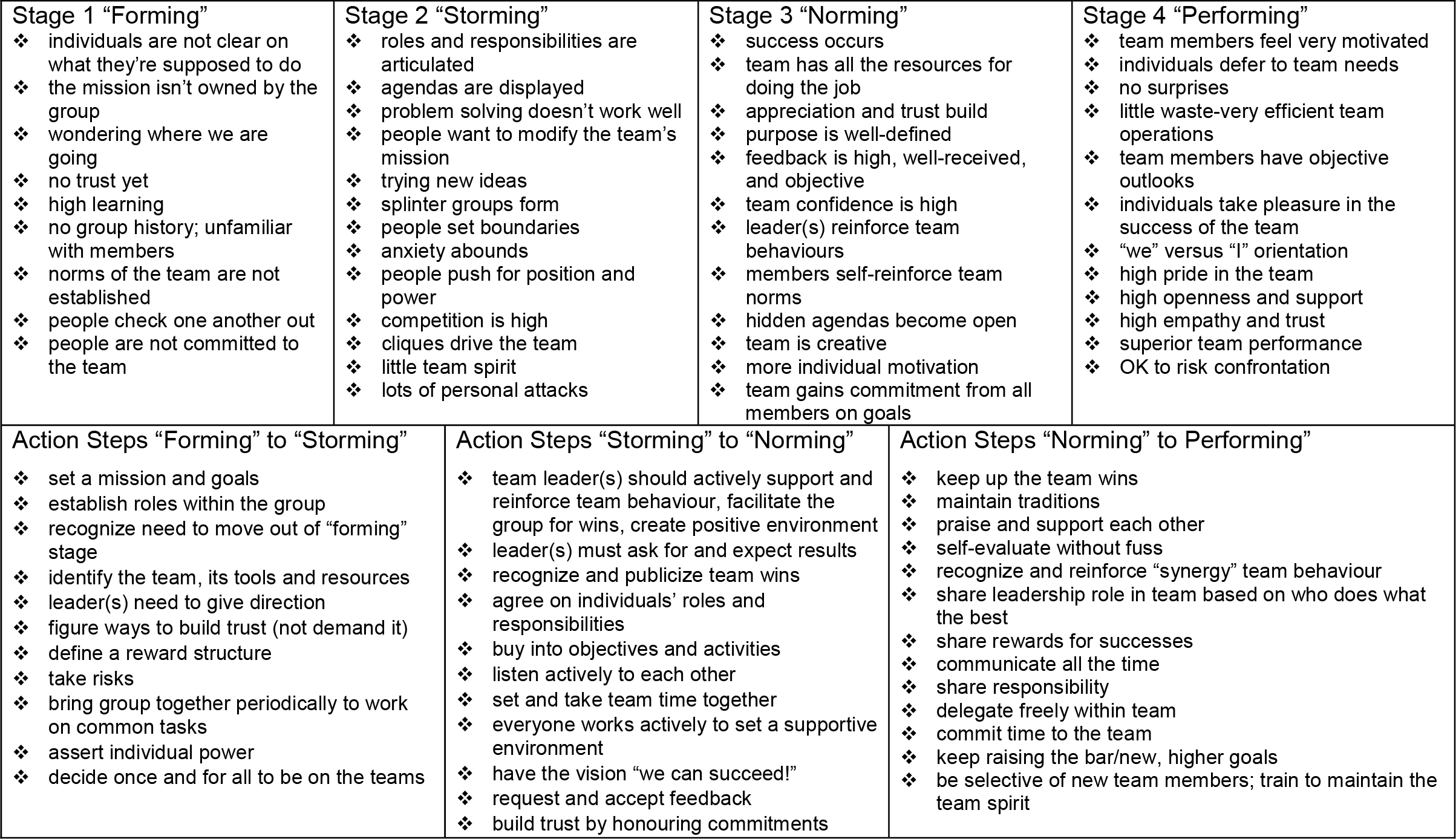8
Au fur et à mesure que votre groupe traverse ces étapes, restez attentif aux schémas qui tendent à se produire à chacune d’entre elles. Par exemple, de nombreuses équipes supposent à tort que leur groupe ne peut pas fonctionner lorsqu’elles se trouvent au stade de la confrontation. Cependant, cette étape est une partie normale de la constitution d’une équipe, au même titre que les autres. L’infographie suivante présente les étapes que vous et les membres de votre groupe pouvez franchir ensemble pour passer à l’étape suivante de votre travail collectif. Ce que vous voulez, c’est obtenir une équipe performante qui soutienne votre apprentissage au sein de la communauté.

Maintenant que vous avez examiné les moyens par lesquels une équipe peut progresser au cours de sa constitution, appliquez vos connaissances à des dilemmes d’équipe dans le questionnaire ci-dessous. Lorsque vous avez terminé le questionnaire, cliquez sur la flèche Suivant pour poursuivre l’atelier.
Un élément interactif ou médiatique a été exclu de cette version du texte. Vous pouvez le consulter en ligne ici : https://pressbooks.bccampus.ca/ learningtolearnonline/?p=124

